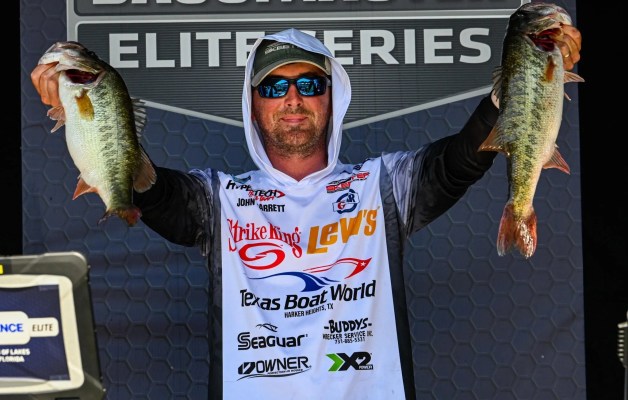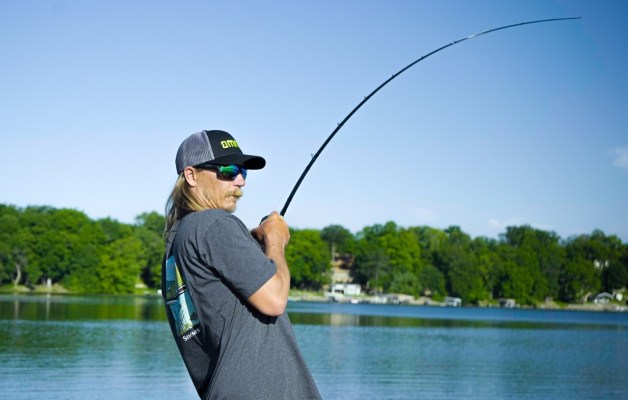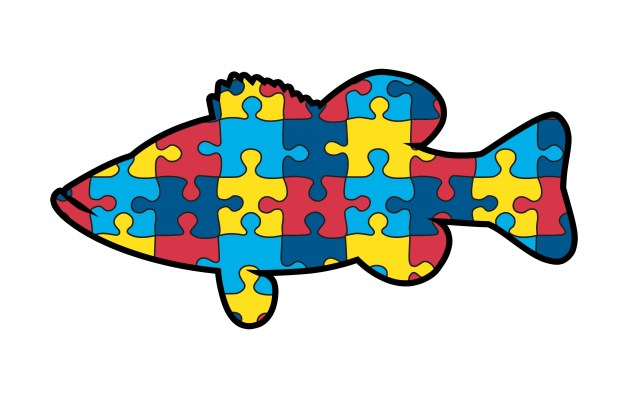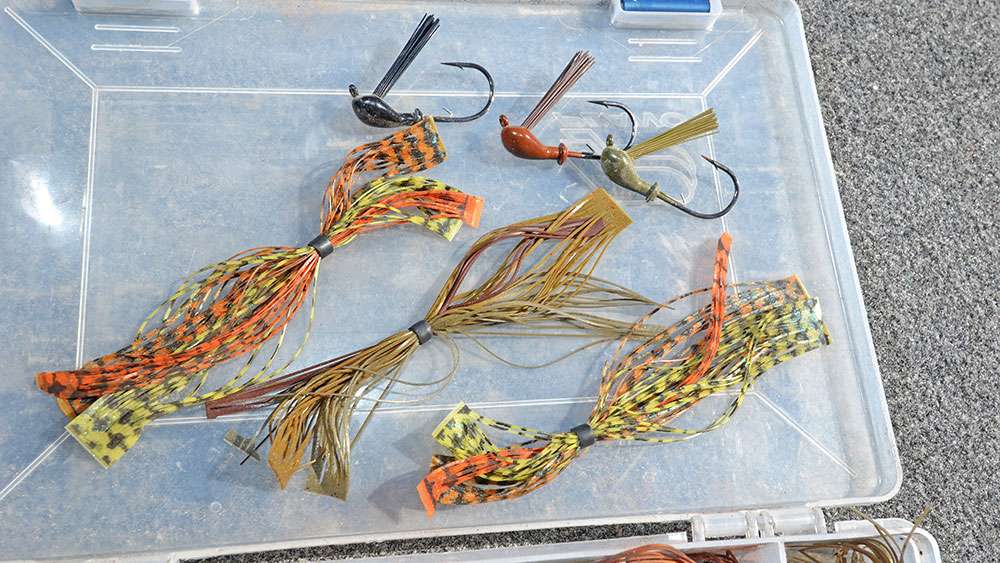
Many Bassmaster Elite Series pros dote on jigs, but few are bigger jig fanatics than Pennsylvanian Dave Lefebre and Alabamian Matt Herren. Both anglers claim they fish a jig 50 percent of the time while competing in tournaments. Herren relies on a handful of jigs, while Lefebre’s jig arsenal is mind-boggling.
“I fish a hundred different jig combinations,” Lefebre said.
Build ‘em in the boat
Open the jig boxes in Herren’s boat and you’ll find un-skirted black, brown, green pumpkin and white jig heads in assorted weights. Three Santone jig styles cover the bases for Herren. They include the M Series Flipping Jig that Herren designed, the Pro Football Jig Head and the round Texas Finesse Jig Head.
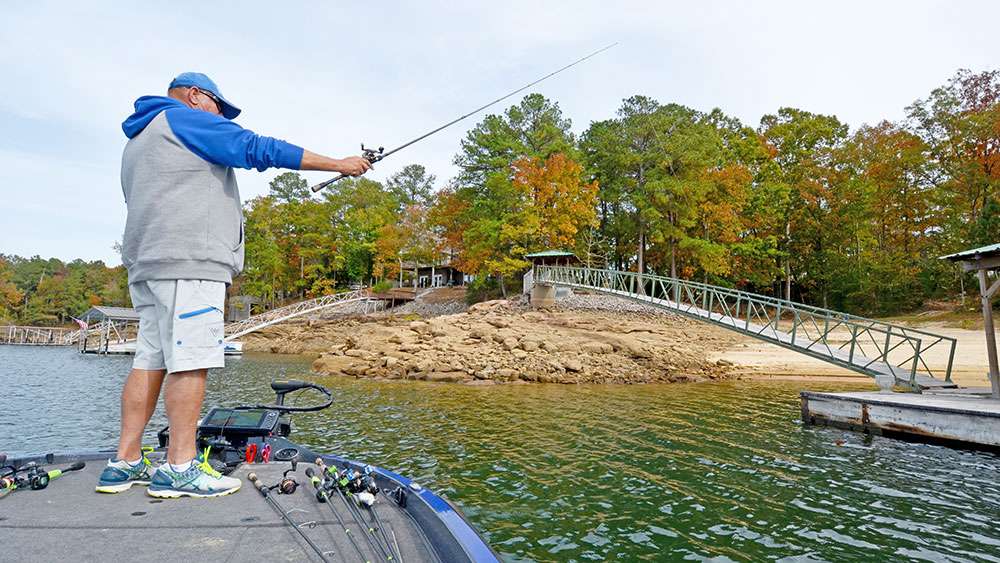
He stores skirt-making materials in a separate box. It includes skirt collars and fine cut silicone skirt strips in natural hues that mimic a wide variety of bass forage. Once Herren tunes into what the bass are up to, he sits on his front deck and makes a makes skirt on the spot that best matches the conditions.
He performs this operation so often that it takes him only seconds to open a rubber skirt collar with needle nose pliers, insert the desired skirt strips, attach the skirt to a jig and snip off the excess stands. He could have been a brain surgeon.
Herren’s three options
The M Series Flipping Jig is Herren’s big hitter when he is flipping and pitching to cover. He typically dresses this jig with a Reaction Innovations 3 1/2-inch Twerk jig trailer or a soft plastic chunk. Herren also casts his M Series jig when he fishes offshore structure that has stumps, brush or other snaggy wood cover.
A football jig gets the call when he fishes offshore structure on Kentucky Lake and other reservoirs that have stained water. Besides the Twerk and a chunk, he will also match this jig with a Reaction Innovations 4.2-inch Sweat Beaver.
A 7/16-ounce round Texas Finesse Jig Head is his choice when fishing deep, clear water, especially on lakes that support spotted bass. He downsizes the jig’s profile with a Reaction Innovations 3-inch Petite Twerk or 3 1/2-inch Smallie Beaver. If he sees suspended bass on his graph, Herren will dress this jig with a double-tail grub and swim it above the bottom at whatever depth the bass are hanging.
Lefebre’s expansive jig world
Lefebre is currently designing a series of jigs for Terminator based on the homemade models that, for years, have anchored his accomplished tournament career. He claims that the head on his most versatile jig shares features with the old Arkie style. It comes through cover well and stands upright on the bottom.
He molds this jig in five different sizes, from 1/4 through 1 ounce, and each size is made with four or five different hooks. For example, the 1/4-ounce jig is molded with 2/0 and 4/0 light wire hooks for casting presentations, as well as 3/0, 4/0 and 5/0 heavy wire hooks for flipping and pitching. The density of the cover and the size of the bass dictate, which jig and hook combination Lefebre chooses.
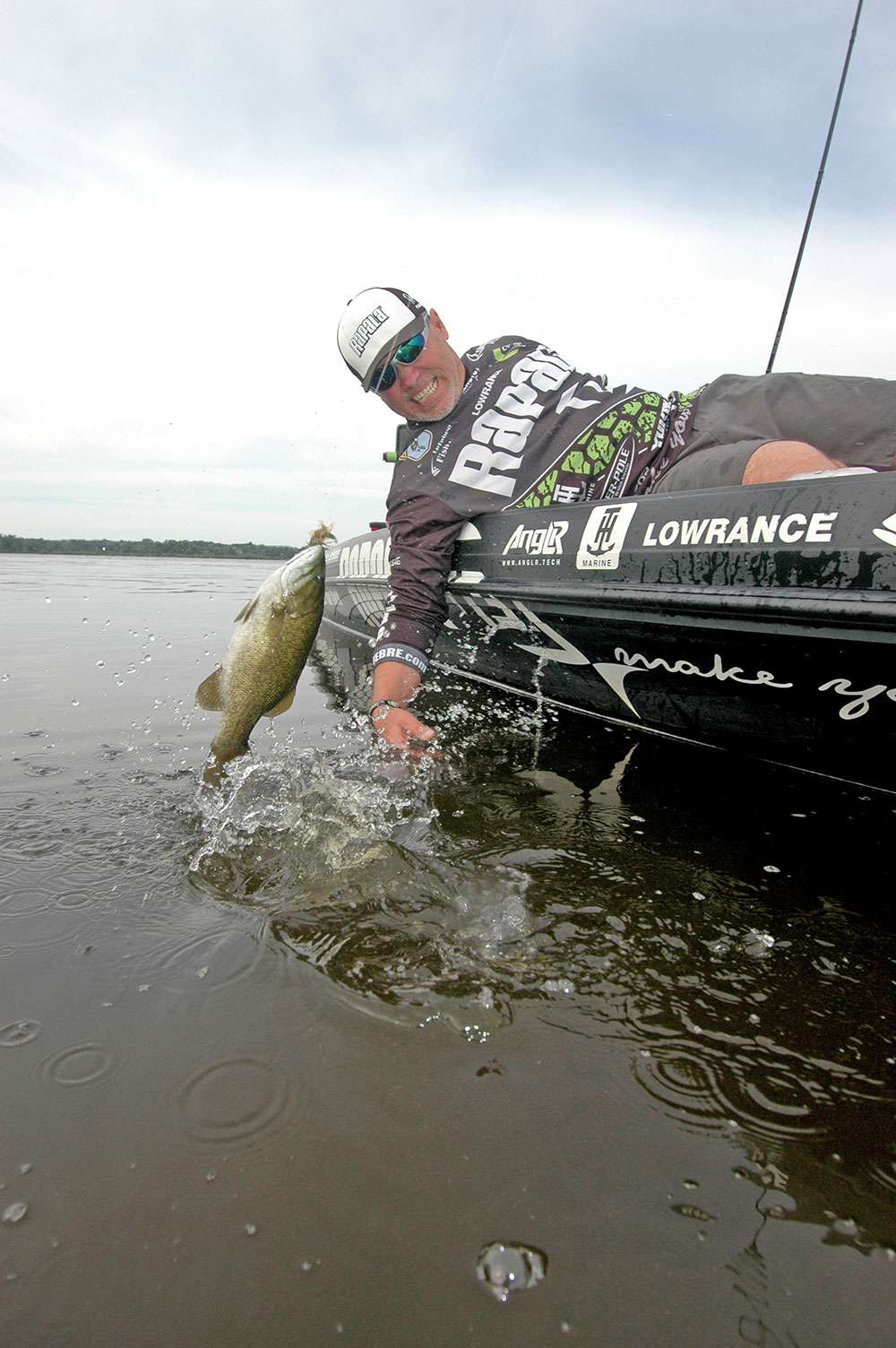
The result is that this single Lefebre jig head has more than 20 configurations. When you consider that the same is true of his other prototype jigs, he may well have as many as 100 different jigs that play into his tournament fishing.
One of his more offbeat skirted jigs weighs 5/32-ounce and comes through cover well. When fishing this finesse bait deep for smallmouth and spotted bass, he ties on one that sports a light-wire Daiichi 2/0 hook. He dresses it with the very tip of Yamamoto’s Flappin’ Hog.
“With 8- or 10-pound test I can stab a fish at the end of a long cast with that jig in 30 feet of water,” Lefebre said.
At the other extreme, he will fish this same jig with a sturdy 3/0 Owner Hook, bulk it up with a chunk and flip and pitch it into cover.
“That little jig is one of my main baits,” Lefebre said. “I’ve caught 7-pounders with it on 20-pound test.”
At the 2017 Bassmaster Elite Series tournament on Lake Okeechobee, Lefebre nabbed sixth place by reeling a green pumpkin Terminator Swim Jig sporting a 5-inch Yamamoto Double Tail Grub through dollar pads and eelgrass. He is currently working on new swim jig models that will feature bigger hooks for wrenching bass from more challenging cover.
“I was swimming jigs before anybody ever heard of it,” he said. “I won a 100-boat derby swimming a jig in 1991. I wasn’t happy when the word got out on it.”
One jig that is not likely to be in Lefebre’s lineup is the football head.
“I’ve fished with the best football jig guys on the planet,” he explained. “I’ve kicked their butts every time from the back of the boat with my regular 3/4-ounce jig.”
Lefebre fishes all of his jigs on baitcasting tackle, even the diminutive 5/32-ounce model. He uses spinning tackle only for drop shotting. One reason he rarely gets an overrun when casting a bantamweight jig with a baitcaster is that his reels are only half full.
“I’ve been doing that for 15 years,” Lefebre said. “Everybody makes fun of me by asking if I’ve run out of line.”
He claims that under-filling a baitcasting reel virtually eliminates backlashes, especially when skipping a jig. Although under-filling a spool does cut down on the reel’s retrieve speed, it is not enough to cause problems, claims Lefebre.
“I just set the hook and reel like crazy,” he said.


